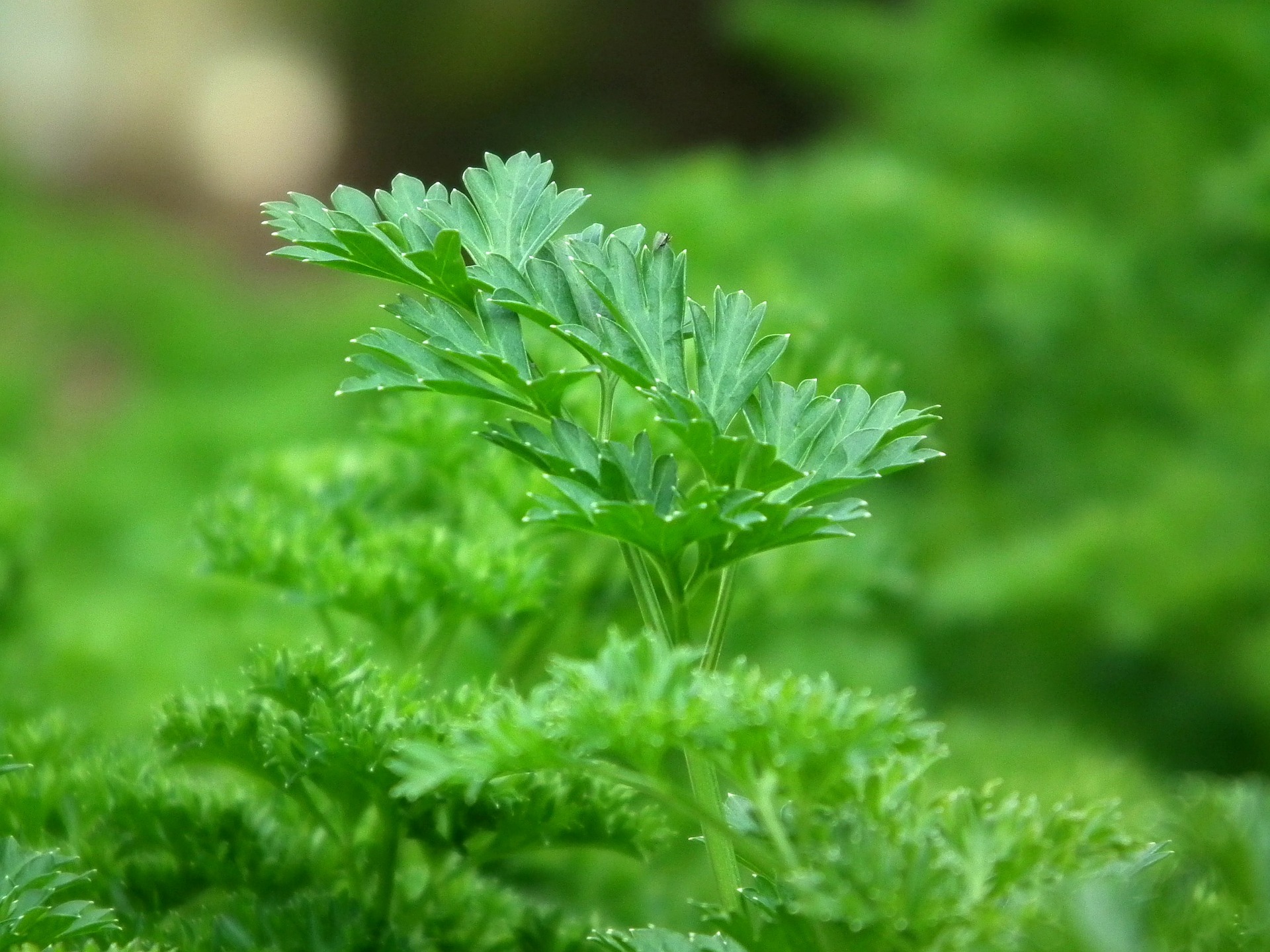Parsley is one of my favorite herbs, along with basil and another herb we have yet to check out.
There are two main types of parsley, flat leaf and curly, and you can read about the difference between the two here.
The Spice and Herb Bible describes parsley perfectly: “Parsley complements most flavors it is put with and never seems to dominate, yet always manages to make its presence felt.”
Origin:
Parsley’s origins are difficult to trace for two reasons: it’s been cultivated for several centuries, and today’s parsley bears little resemblance to the parsley of the past.
The herb grew abundantly in Greece, where ancient Greeks did not cook it, but viewed it as a symbol of death. Later, in Rome, the Romans enjoyed parsley as somewhat of a breath mint after drinking wine.
Growing parsley:
- Doesn’t have strict growing conditions.
- Needs partial shade.
- Prefers a deep pot.
- Can get up to 18 inches tall.
Drying parsley:
Parsley dries quite well – therefore, dried parsley really isn’t too bad in lieu of the fresh version. Believe it or not, parsley can be dried in the oven as well as air-dried. If air drying, keep the herb in loose bundles. They can be dried in bags, or hung up to dry.
Freezing parsley:
I have successfully frozen it as mentioned in all about basil; it’s frozen in oil ice cubes. You could also bunch parsley and store it in plastic bags in the freezer.
Food parsley compliments:
- Omelets, scrambled eggs.
- Potatoes.
- Soups and sauces.
- Pasta dishes.
Although often known as a garnish, parsley is becoming more of an ingredient in and of itself, including with salads. If using parsley as a garnish, use curly over the flat leaf variety.
